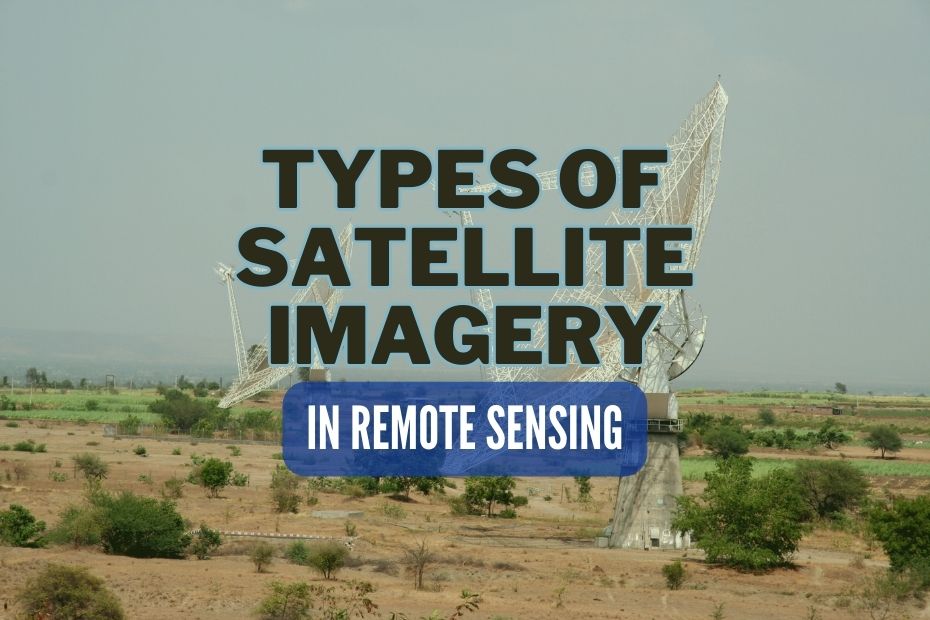When it comes to observing our beautiful Earth from space, satellite imagery plays an indispensable role. This technology enables us to examine the Earth surface with unprecedented detail and accuracy. Let’s delve into the different types of satellite imagery, specifically focusing on visible, infrared, and water vapor imaging.
Satellite imagery can be categorized into 3 types such as Visible, Infrared and Water Vapor. Each type has its own unique applications and advantages, allowing for a wide range of uses in fields like mapping, agriculture, and weather monitoring.
3 Types of Satellite Imagery
There are 3 different types of satellite imagery that capture different aspects of the Earth’s surface and atmosphere. let’s delve into it:
#1. Visible Satellite Imagery
Visible satellite imagery is the most intuitive of the lot, as it showcases what our naked eye would see from space: a full-color, full-detail, broad view of Earth. It uses reflected sunlight to generate an image, and thus, can only provide data during daylight hours when the Earth’s surface is not covered by clouds.
This type of satellite imagery often forms the basis for further analysis, as it provides a fundamental understanding of the ground reality. However, its use is limited to clear days and times when sunlight is available.
These images provide us with valuable information about the physical characteristics of the land, such as its topography and the presence of water bodies.
For a more comprehensive list of satellites used for visible imagery, you can visit this page. To access free data for your analysis, check out these free resources.
#2. Infrared Satellite Imagery
Unlike visible satellite imagery, Infrared satellite imagery operates beyond the confines of daylight. It detects heat differences on the Earth surface, thereby providing round-the-clock data. This type of imagery is excellent for identifying cloud coverage and differences in land and water temperatures, even during the night or when the earth’s surface is covered with clouds.
Infrared imagery is a vital tool for meteorologists, helping them to track storms, monitor sea surface temperatures, and understand the health of vegetation.
Infrared satellite sensors can measure different wavelengths of infrared radiation, enabling us to analyze specific aspects of the Earth’s surface and atmosphere. For instance, thermal infrared sensors can help detect areas of high temperature, such as active volcanic regions or forest fires. This information is crucial for monitoring natural disasters and mitigating their impact on human lives and ecosystems.
Interested in knowing more about satellites used for this purpose? Explore the list of Indian remote sensing satellites.
#3. Water Vapor Satellite Imagery
Water vapor satellite imagery probes deeper into the atmospheric conditions, detecting moisture levels. This type of satellite imagery relies on specific wavelengths that are sensitive to water vapor in the atmosphere, making it valuable for meteorologists predicting precipitation and tracking large scale weather patterns.
By distinguishing regions with heavy moisture content from the drier ones, water vapor imagery helps in forecasting weather changes and can even hint at potential rainfall locations. Here’s a great resource discussing the uses of satellite imagery, including water vapor imaging.
By better understanding these three types of satellite imagery, we can better comprehend our planet’s surface, weather systems, and environmental changes. Together, visible, infrared, and water vapor imaging give us a fuller picture of our complex, ever-changing Earth.
Combining Different Types of Satellite Imagery
The real power of satellite imagery emerges when you combine these different types – visible, infrared, and water vapor. These combined images offer a much more detailed understanding of the earth surface, its climatic behavior, and the patterns that influence our environment.
When viewing a combined satellite image, one might observe a bright patch of clouds on the visible image, a cool patch on the infrared image, and a high moisture area on the water vapor image. This integrated information, in turn, could lead to the identification of a developing storm. As such, the power of combined satellite imagery is a game-changer for environmental research and meteorology.
For more insights on the specific roles and capabilities of different types of satellites, consider visiting this informative page.
Wrapping Up
From visible to infrared, and water vapor imagery, the world of satellite imaging is a rich and fascinating field. By leveraging these tools, we’re not just observing the Earth – we’re increasing our understanding, fueling our curiosity, and crafting solutions for a sustainable future.
To delve deeper into the exciting world of satellite imagery and to access free data for your research or project, this source is a highly recommended starting point. Remember, the sky is not the limit; it’s just the beginning!
Frequently Asked Questions (FAQs)
What is satellite imagery?
Satellite imagery refers to images and data captured by satellites orbiting the Earth. It provides valuable visual information about the Earth’s surface, atmosphere, and other features.
How is satellite imagery captured?
Satellite imagery is captured using sensors and cameras on board satellites. These sensors capture electromagnetic radiation reflected or emitted by the Earth, which is then transmitted back to Earth for processing and analysis.
How is satellite imagery used in agriculture?
Satellite imagery is used in agriculture for crop monitoring, assessing vegetation health, predicting yield, and optimizing resource allocation. It helps farmers make informed decisions and improve agricultural practices.
How is satellite imagery beneficial for weather forecasting?
Satellite imagery provides real-time data on cloud cover, atmospheric conditions, and weather patterns. Meteorologists use this information to track storms, analyze weather systems, and make accurate weather forecasts.
What is the purpose of water vapor satellite imagery?
Water vapor satellite imagery operates in a specific wavelength band to detect the concentration of water vapor in the atmosphere. It plays a crucial role in weather prediction and climate studies by revealing the locations of moist and dry air.
